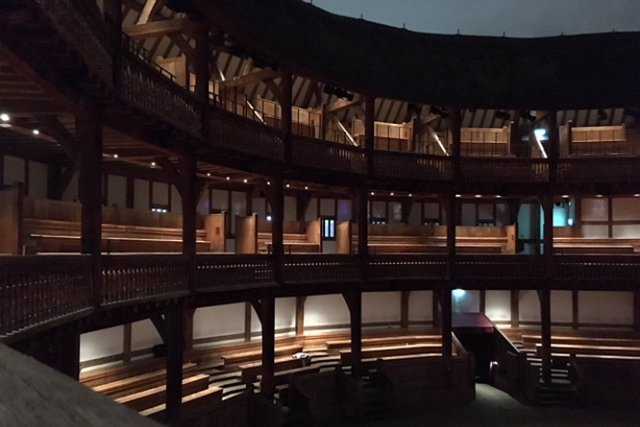Northern Light switches Shakespeare’s Globe to LED
- Details

“This is a very unusual project,” says the Globe’s project manager, Paul Russell. “Because this is a reproduction of the original Elizabethan building, modern technology needs to be inconspicuous. This means that sometimes, we need to do things in a way that may not seem logical or be the simplest solution to ensure we maintain the authenticity of an ancient structure.”
Northern Light’s relationship with the Globe dates back to the design and build of its Sam Wannamaker Playhouse in 2012/2013, when they assisted with its technical design and infrastructure installation, then handling an additional upgrade in the main auditorium three years later. Their knowledge and understanding the philosophy of the organisation has stood them in good stead for this latest project.
“The way everything looks is as important as the technology being used,” continues Paul. “In fact, we’re so dedicated to this that we have a committee of professors making sure that everything is in keeping with the ethos of the building. Northern Light had to be totally on board with this, so the long-standing relationship I have with them was really important. They understood they would have to go with me on everything: if they had to route a cable an extra 30m to keep it hidden, then it had to be done.”
The initial brief was to replace all the existing houselights with LED fixtures, adding extra fixtures to improve coverage and reduce energy consumption, as the lighting runs up to 12 hours a day. Additional infrastructure and fixtures were also installed to complement the existing emergency lighting.
The main auditorium at the Globe is open to the elements, so fixtures had to have a suitable IP Rating and, with a both the supporting infrastructure and fixtures needing to be as discreet as possible, the Northern Light team needed to source a small, non-industrial looking product with a wide-angle lens that could withstand the elements.
“The fixture also had to be dimmable via DMX, with a smooth theatre dimming curve and ideally be around the 2700-3000k colour temp,” says Northern Light’s Michael Percy. “This didn’t give us a lot of options, but after contacting a handful of suppliers and having extensive demos, both onsite and in our workshops, we decided to go with dLED Illumination Technologies Ginger XL with Constant Current Push Drivers.”
As well as sourcing the ideal fixture, Northern Light supplied and built four control racks and power distribution, with the system controlled via an ETC Paradigm or ETC Eos console. DMX distribution is via a Swisson DMX Node. Each circuit has its own dLED Driver located in one of the equipment racks, corresponding to its location in the venue.
“There are 172 fittings in total and they’re on show,” says Paul. “They all had to be installed very carefully and the placing of them was very important. Our season runs from April to October, there are two shows every day and the auditorium and other areas of the site are open to the public for daily tours, so scheduling works is always a challenge.”
To allow for this, the work was scheduled in phases on each level, with sections blocked off to allow everything to be done safely. The Globe’s in-house electrical and fabrication team installed the containment systems and all custom metalwork, including some custom brackets to allow fixtures exactly where they were wanted. Installation was handled by Northern Light’s London team, with most work being done in the early morning, which made it possible to work around the Globe’s rehearsal schedule.
“We now have a much cleaner environment,” says Paul. “This a 20-sided building and everything is mirrored from one side to the other. Making things symmetrical allows us to hide things in plain sight. It’s a bit of an optical illusion, but people don’t see symmetrical stuff so much.”
(Jim Evans)
















